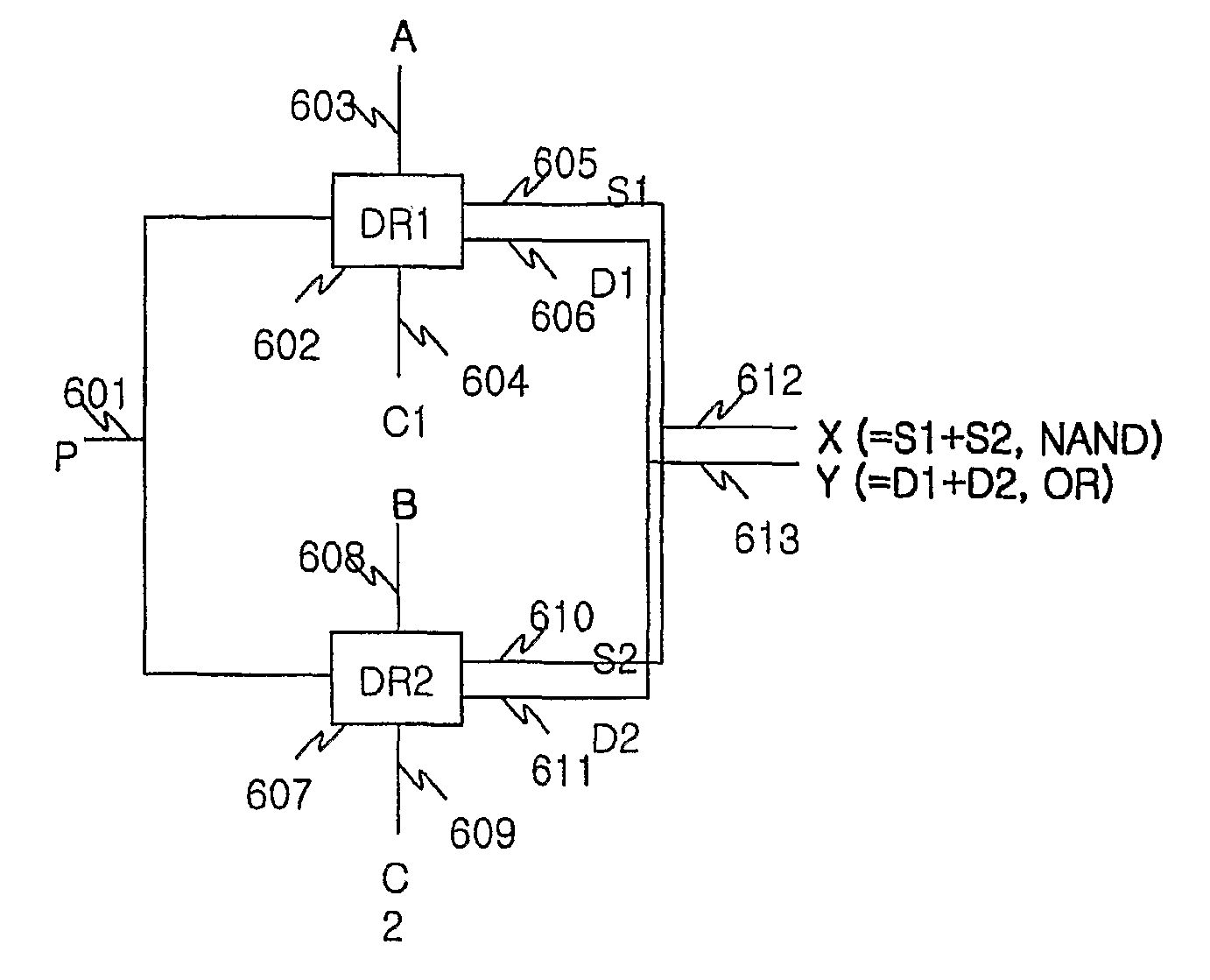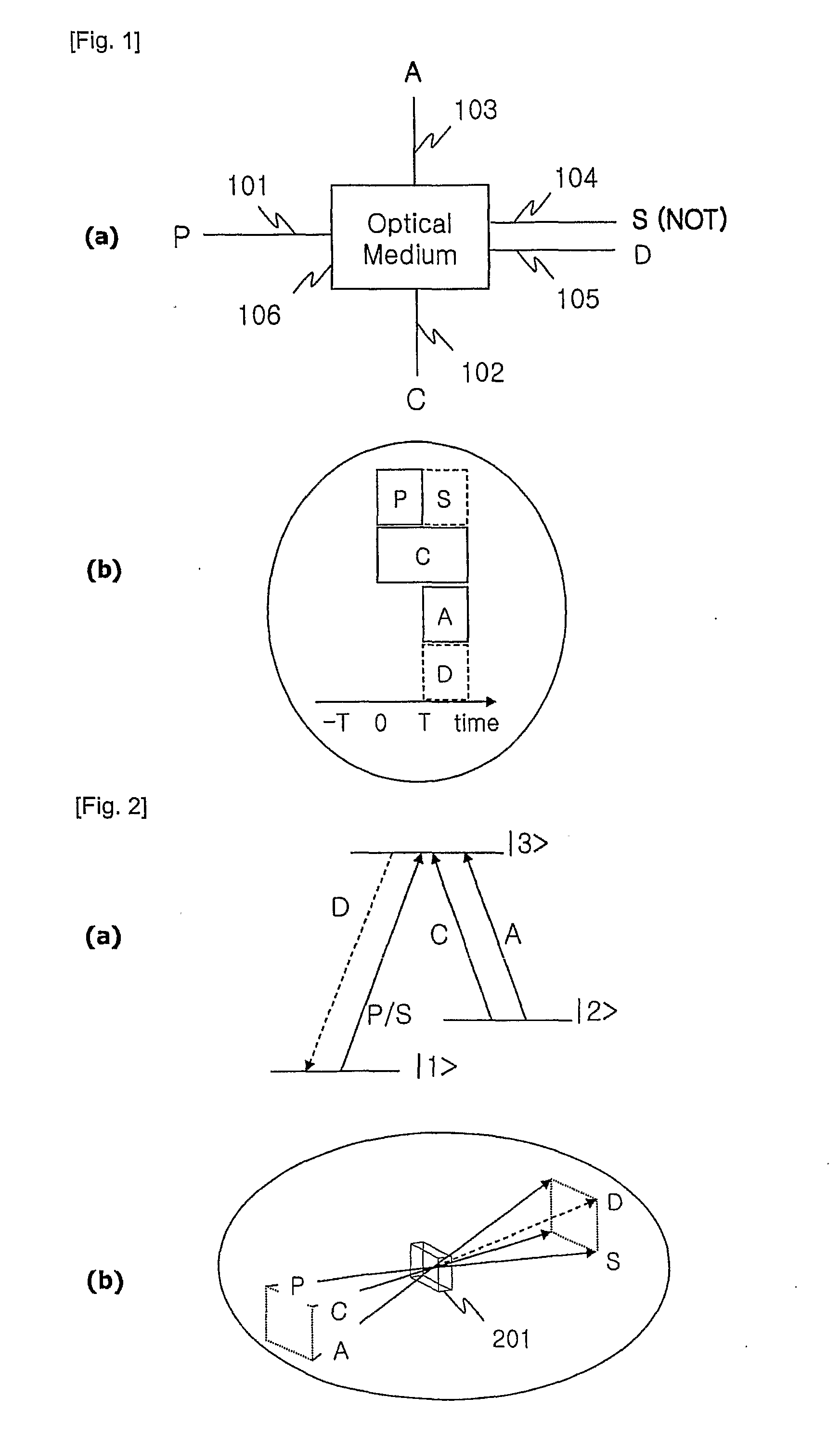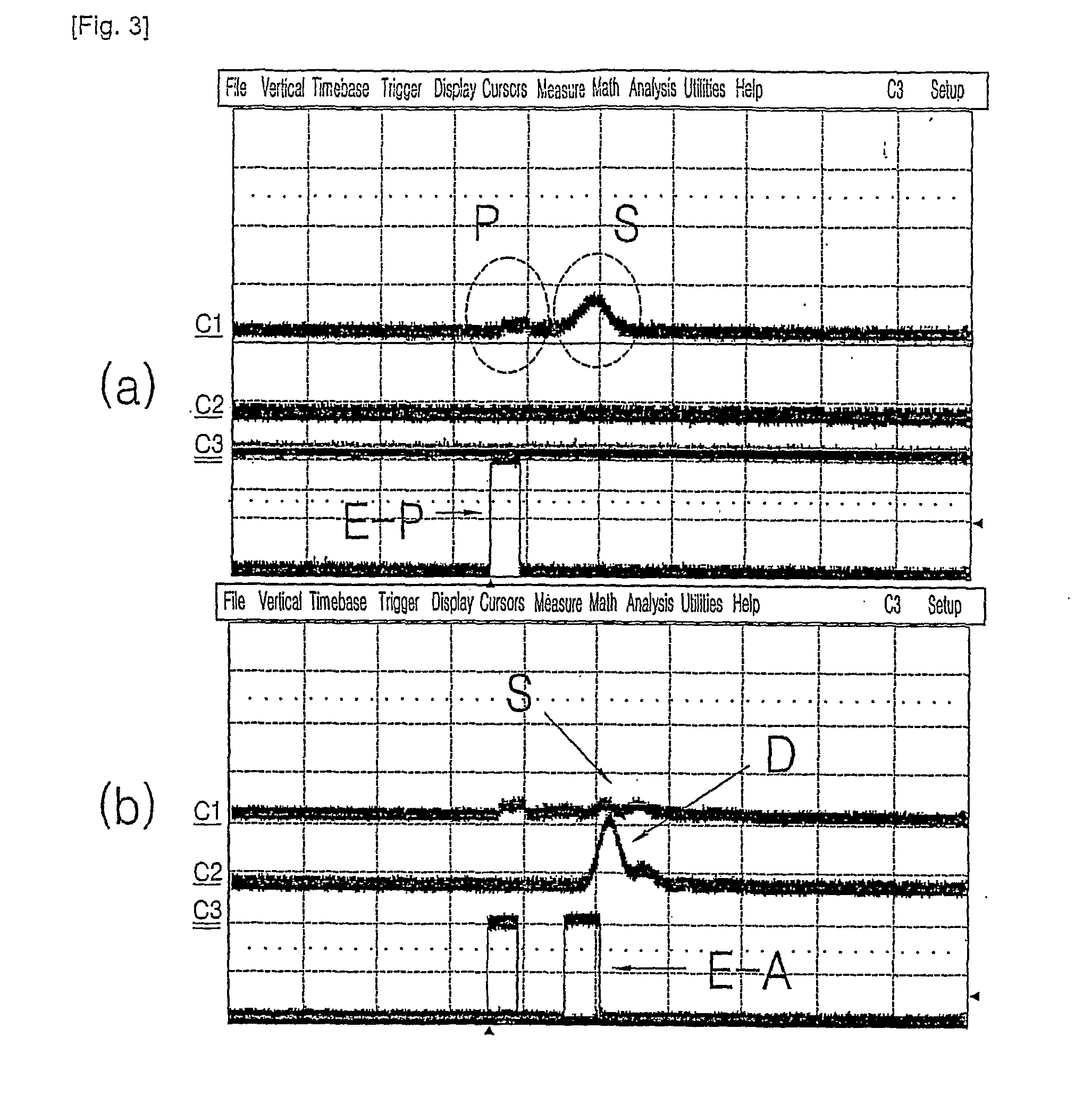[0013]The delayed
optical logic gates have functions of dynamically controllable
delay-time of the incoming
signal light using slow light phenomenon, where the
delay-time of the logic gates is controllable by adjusting another
coupling light intensity to affect on the group
delay of the slow light. The
switching time for each
signal light pulse limits in phase
decay time of the optical
nonlinear medium (B. S. Ham, Applied
Physics Letters, Vol. 85 (No. 6), pp. 893-895 (2004); Physical Review B, Vol. 68 (No. 7), pp. 023811 (2003); U.S. Pat. No. 6,628,453). However, the bandwidth of the delayed optical logic gates or overall gating speed is invariant of the group delay of the slow light because the bandwidth of ‘IN’ and ‘OUT’ across the
nonlinear medium used for the delayed optical logic gates is same. Main
advantage of the present invention of the delayed optical logic gates is the
data delay-time
controllability useful for a slow electronic device to alleviate
processing power toward high-speed optical data rates.
[0014]Briefly described, a
system of the delayed optical logic gates of the present invention is provided by multiply connected delayed optical routers composed of a
nonlinear optical medium and coherent light pulses. The
nonlinear optical medium of the delayed optical logic gates is composed of at least three-energy levels. Two of them should be closely spaced on the ground states, and the third one should be an
excited state. The frequencies of the
laser light of C and A are either same or different depending on purposes: See FIG. 1. The light pulse A is used as a control for nondegenerate four-wave mixing processes to generate the output pulse D. The nondegenerate four-wave mixing output D can be used as an input(s) to the second nonlinear medium to configure the present invention of the delayed optical logic gates. In FIG. 1 the output S is the slow light of the input light P. According to nondegenerate four-wave mixing process, S and D are alternative. Each light pulse can be guided by an optical
waveguide,
free space, or
surface plasmon optical
waveguide. The optical
waveguide is not part of the current invention. By connecting two or more delayed optical routers, the present invention of the delayed optical logic gates performs the Boolean logic: NOT, NAND, AND, OR, XOR, and NOR. The delayed optical logic gates can be applied for
scalability purposes. The
transmission time between two delayed optical logic gates is negligible because the light pulse moves almost
speed of light.
[0015]To achieve these and other advantages as described above and in accordance with the purpose of the present invention, this specification provides a method for operating a logical gate using at least one delayed
optical router comprising a nonlinear
optical medium, wherein the nonlinear
optical medium comprises two closely spaced ground states such that a transition between said two ground states is
dipole forbidden, and an
excited state such that two-photon transitions between said two ground states via said excited state are allowed, the method comprising:
[0016]using at least one of a slow light (S) and a nondegenerate four-wave mixing
signal (D) as a result of
Boolean algebra,
[0017]wherein the slow light (S) is appeared by applying, to the nonlinear
optical medium, a first
laser beam (P) with a first frequency corresponding to a first transition between a first
ground state of the two ground states and the excited state and a second
laser beam (C) with a second frequency corresponding to a second transition between a second
ground state of the two ground states and the excited state; and the nondegenerate four-wave mixing signal (D) is appeared by applying, to the nonlinear optical medium, the first laser beam (P) with the first frequency, the second laser beam (C) with the second frequency and a third laser beam (A) with a third frequency corresponding to the second transition.
[0018]This specification also provides a method of operating a logical gate using at least one delayed
optical router comprising a nonlinear optical medium, wherein the nonlinear optical medium comprises two closely spaced ground states such that a transition between said two ground states is
dipole forbidden, and an excited state such that two-photon transitions between said two ground states via said excited state are allowed, the method comprising: a) applying, to said nonlinear optical medium, a first laser beam (P) at a first frequency corresponding to a first transition between a first
ground state of said two ground states and said excited state; b) applying, to said nonlinear optical medium, a second laser beam (C) at a second frequency corresponding to a second transition between a second ground state of said ground states and said excited state; c) applying, to said nonlinear optical medium, a third laser beam (A) at a third frequency corresponding to the second transition between the second ground state of said ground states and said excited state; d) adjusting an intensity of said second laser beam (C) to produce a slow light (S), wherein said slow light (S) corresponds to a
group velocity slow down of said first laser beam (P); e) adjusting at least one of intensities of said first laser beam (P), said second laser beam (C), said third laser beam (A), to produce a nondegenerate four-wave mixing signal (D) at a frequency corresponding to a two-photon coherence excitation [Reρ12]2, wherein said slow light (S) is disappeared in response to the producing of said nondegenerate four-wave mixing signal (D); and f) using at least one of said produced slow light (S) and said nondegenerate four-wave mixing signal (D) as a result of a logical gate.
 Login to View More
Login to View More 


